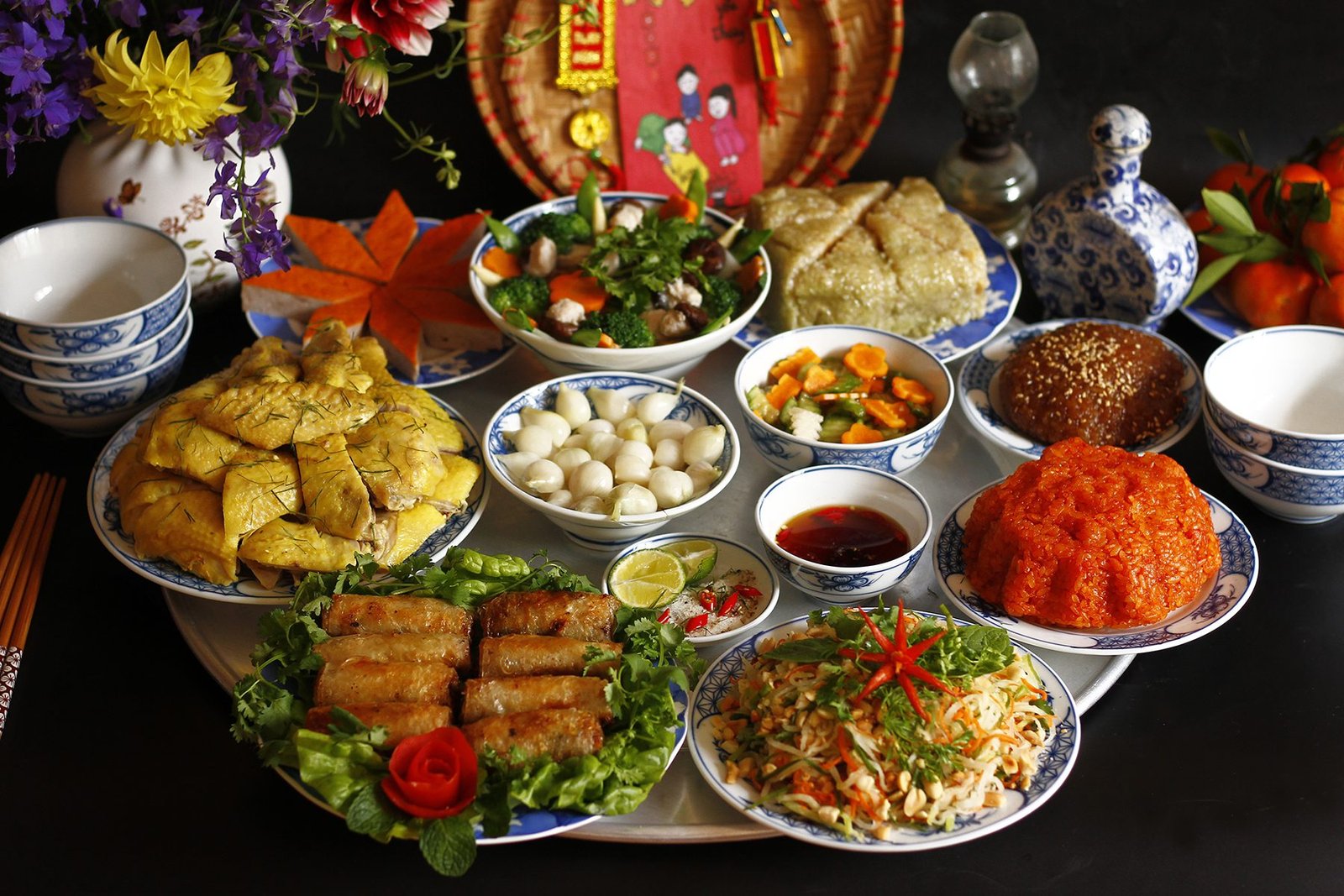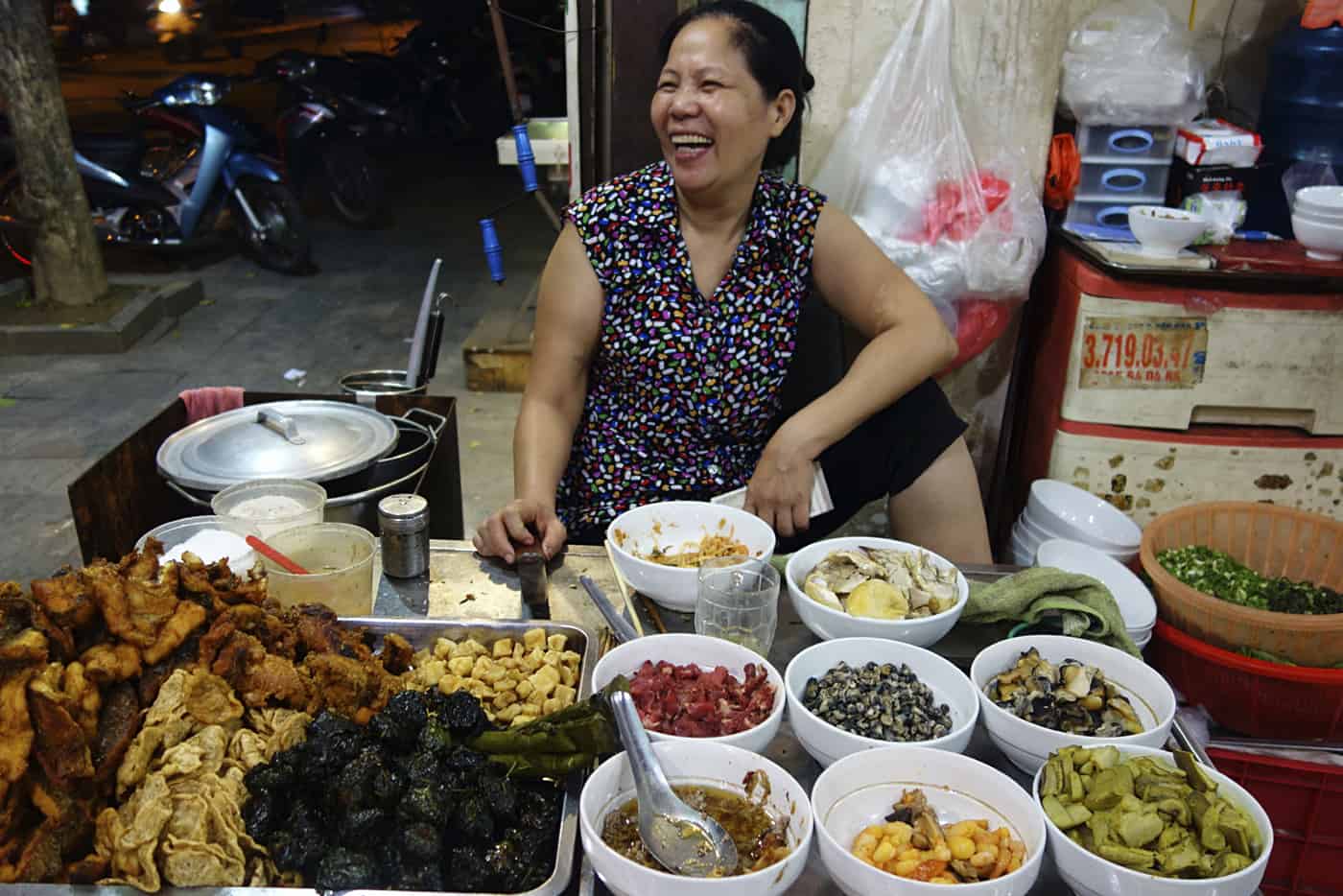Vietnamese cuisine is renowned for its rich flavors, diverse ingredients, and a profound reflection of the country’s history and culture. Beyond its delectable dishes, Vietnam’s culinary heritage is steeped in traditions. These etiquette practices add depth and meaning to the dining experience. This collection of culinary etiquettes unveils the intricate customs and manners observed in Vietnamese gastronomy. It enhances the appreciation of its food culture.
Table of Contents
1. Respecting food and ingredients
To create an extraordinary dish, there is a great reverence for food and its components. The ingredients are carefully selected, mostly from local markets. They are handled with utmost care. This deep respect for ingredients comes from the agrarian roots of Vietnamese society. Farmers and fishermen are highly esteemed for their contributions to the table.
Vietnamese food does not come easily. From the farm or the sea to the kitchen, it undergoes a long journey. This journey, under the talented skills of the cooks, makes the food deserve more appreciation. Therefore, it is not appropriate you leave your plate unfinished. That is why Vietnamese cuisine is special.

2. Table Manners
In Vietnamese cuisine, communal eating is a cherished practice. Meals are often shared, fostering a sense of togetherness and unity. The staple Vietnamese food is rice, typically white rice. The side dishes can range from boiled or stir-fried vegetables to meat. The meats include pork, chicken, beef, or seafood. The soup is all served separately. For that reason, you can share the food with people around the table. You can choose what you want to eat. This makes the meal more cozy.
It is customary to serve elders and guests first as a sign of respect. Chopsticks are the primary utensil. Proper handling is essential. Never point them directly at others. Do not leave them sticking upright in a bowl, as these actions are considered impolite. If you are the guest at someone’s family dinner, you will find yourself not having to pick the food. The host will most of the time put food in your bowl. This shows his or her hospitality.

3. Tea and Coffee Culture
Coffee shops are seen everywhere on the streets of bustling cities in Vietnam. Vietnam is one of the biggest coffee exporters in the world. This makes people believe that coffee is an essential part of Vietnamese cuisine.
Indeed, having a coffee is the best way to start off your day. It is also the fastest way to get to know people. It doesn’t matter if it’s a street coffee shop with tiny stools or a more fancy-looking coffee place. You can find people enjoying these special drinks. They are mostly with friends, as they chit-chat about what’s happening in their lives, and sometimes, others too. If you try the most significant Vietnamese coffee, choose “ca phe sua da”, iced milk coffee. You can also choose “ca phe muoi”, salted coffee, for the most satisfying coffee experience.
What if you visit someone’s house, would they serve you coffee? Surprisingly, tea is what they offer you first. Tea holds a special place in Vietnamese cuisine, and culture, and plays a significant role in hospitality. Serving tea to guests is a gesture of warmth and hospitality. It’s customary to pour tea for others before filling your cup. The art of pouring and receiving tea symbolizes respect and gratitude, creating a harmonious atmosphere during gatherings. The tea used is fresh tea leaves boiled in hot water. It gives a bitter yet authentic taste, unlike the commonly sold tea at drink bars nowadays.
4. Festive Celebrations and Culinary Rituals
Vietnamese festivals and celebrations are intertwined with culinary rituals that reflect the country’s spiritual beliefs and cultural heritage. You can see how diverse Vietnamese cuisine is when there is an important festival coming. For example, during Tet, the Lunar New Year celebration, specific foods hold symbolic meanings. These foods are prepared and offered as offerings to ancestors. Vietnamese food such as banh chung, spring rolls, boiled chicken, etc. are carefully prepared so that every day is a feast.
The reason for that is during this time, family members will come home from wherever they are in the world. There is nothing better than enjoying the greatest food with the best people in your life. These traditions highlight the importance of family, unity, and auspicious beginnings.

5. Street food culture
Vietnam’s vibrant street food scene is a culinary adventure, but it also has its etiquette. You cannot come to Vietnam without eating a bowl of hot “bun rieu†on the side of the street. You should also enjoy a pleasant glass of “che suong sa hat luuâ€. This tapioca sweet soup is great after your main course. It’s undeniable that Vietnamese cuisine is popular for street food.

Forget about McDonald’s or KFC, we also have something served within seconds, and it’s absolutely tasty too. Some people find it awkward at first to go to a busy Vietnamese food vendor. They might share the table with some strangers. The point is to not stay there for more than 30 minutes to talk or chat.
Despite the casual atmosphere, showing respect to street food vendors is crucial. Observing hygiene practices is essential. Acknowledging the chef’s skills is important. Cleaning up after oneself contributes to the overall dining experience. These actions show appreciation for the vendors’ hard work.
Vietnamese cuisine and its etiquette transcend mere dining rules; it embodies a deep-rooted cultural heritage, emphasizing respect, unity, and gratitude. By understanding and embracing these etiquettes, one appreciates the flavors of Vietnam food. One also becomes part of a cultural journey that celebrates community, tradition, and the art of sharing meals. Explore Vietnam’s culinary etiquette. This exploration can deepen your appreciation of its rich and diverse Vietnamese food culture.
Do you need help with finding accommodation in Hanoi? We can put you in contact with one of our partners. Tubudd is a travel app. It provides unique and unlimited services to connect tourists with local guides.

